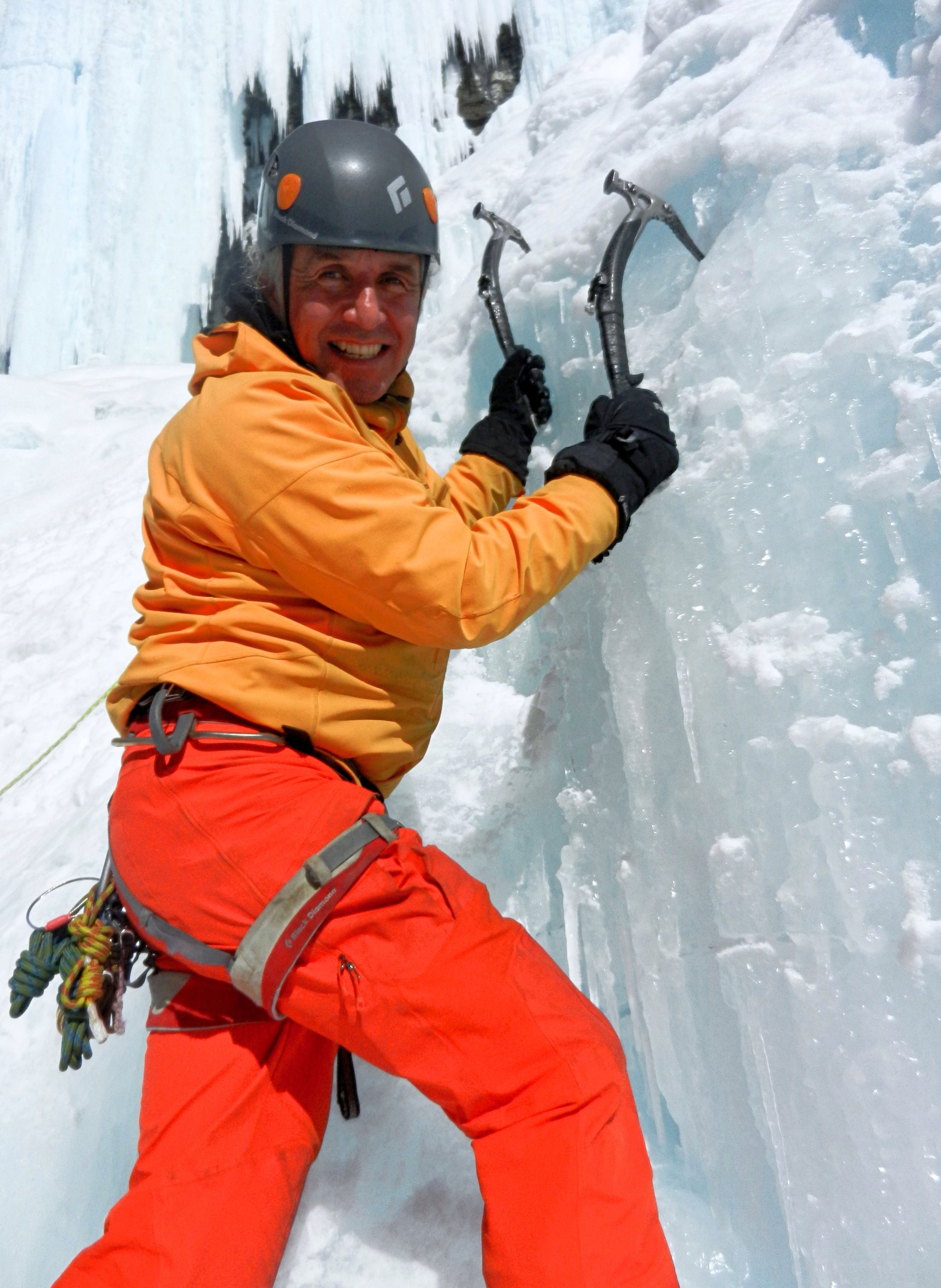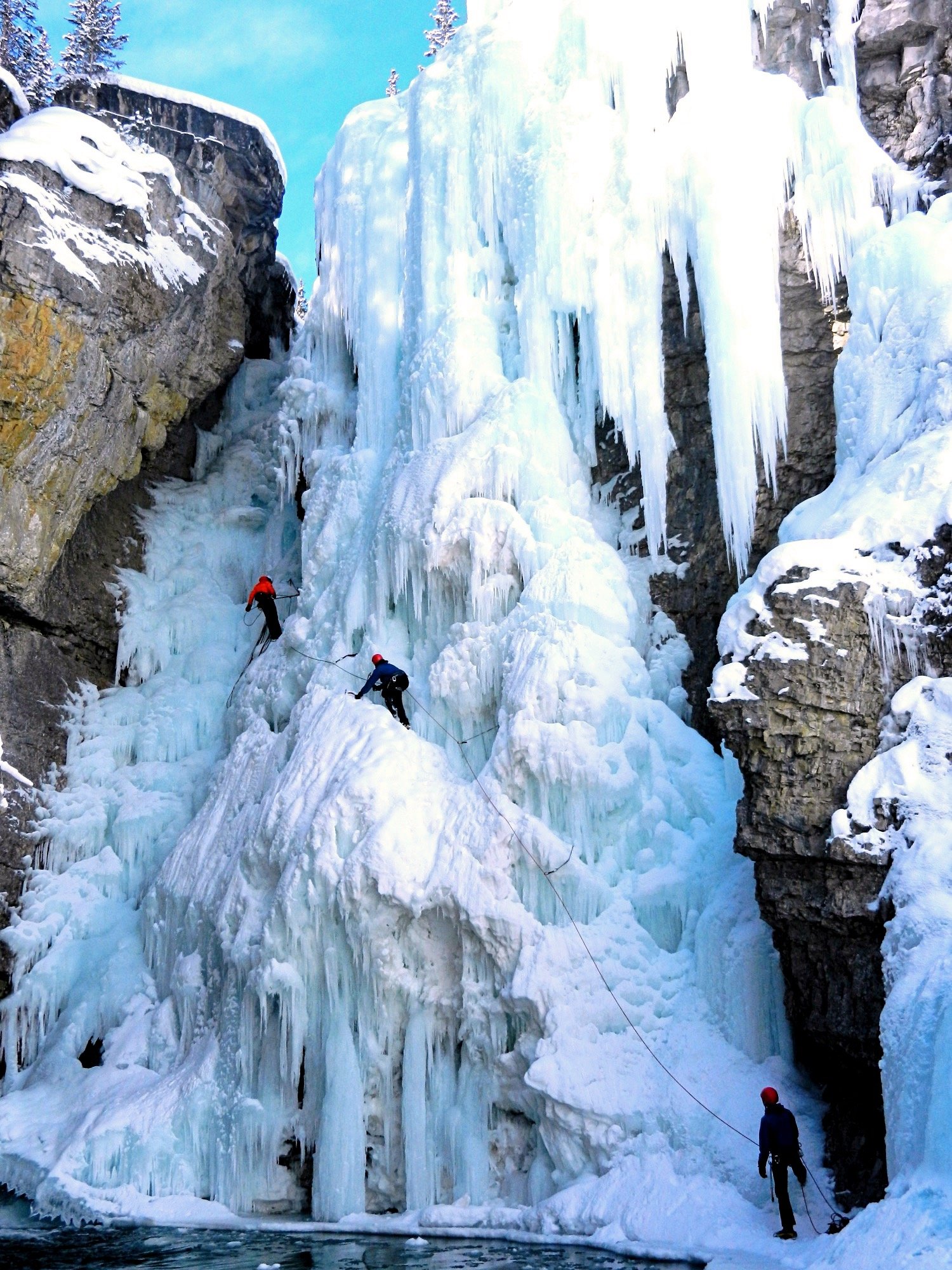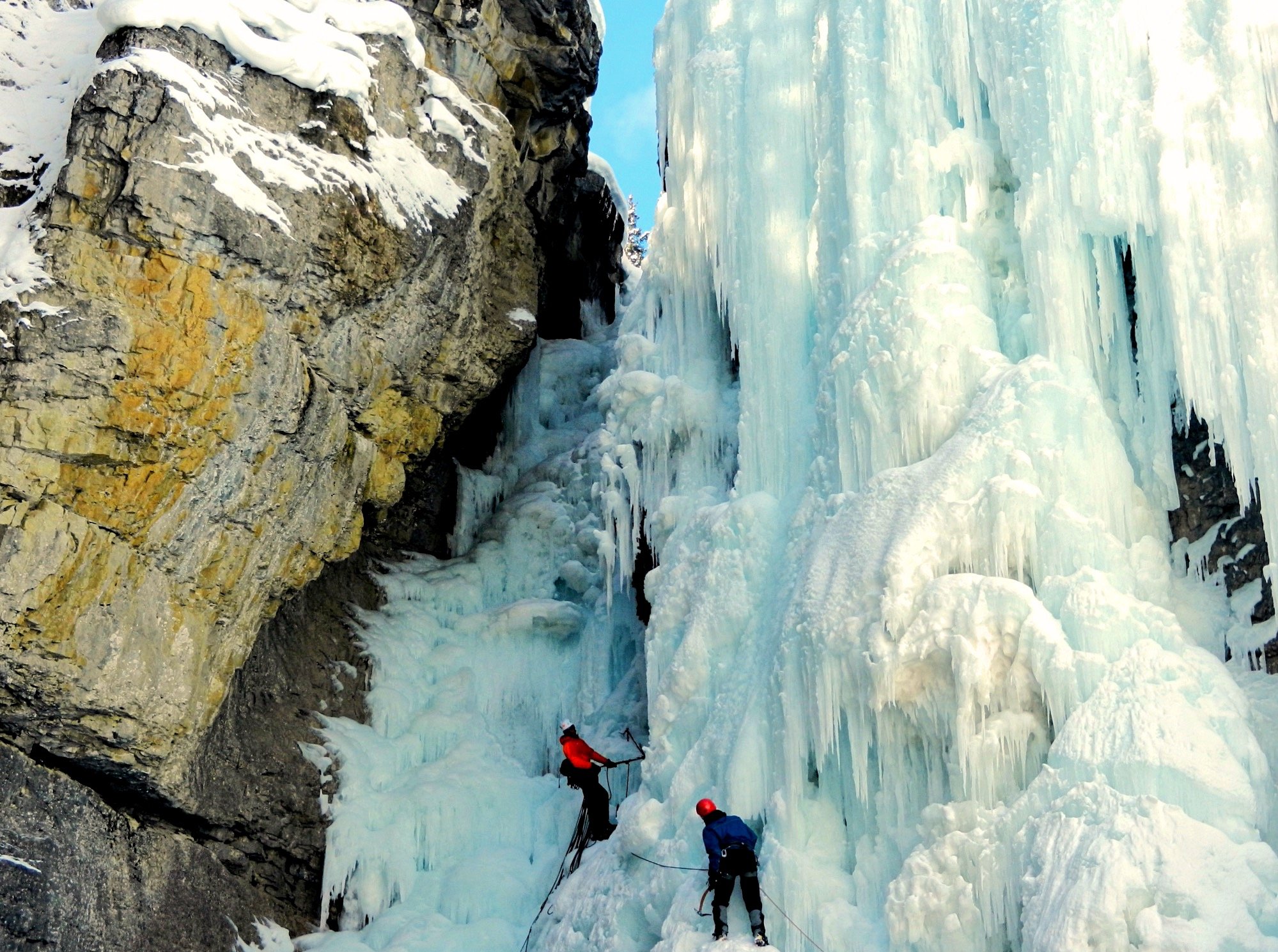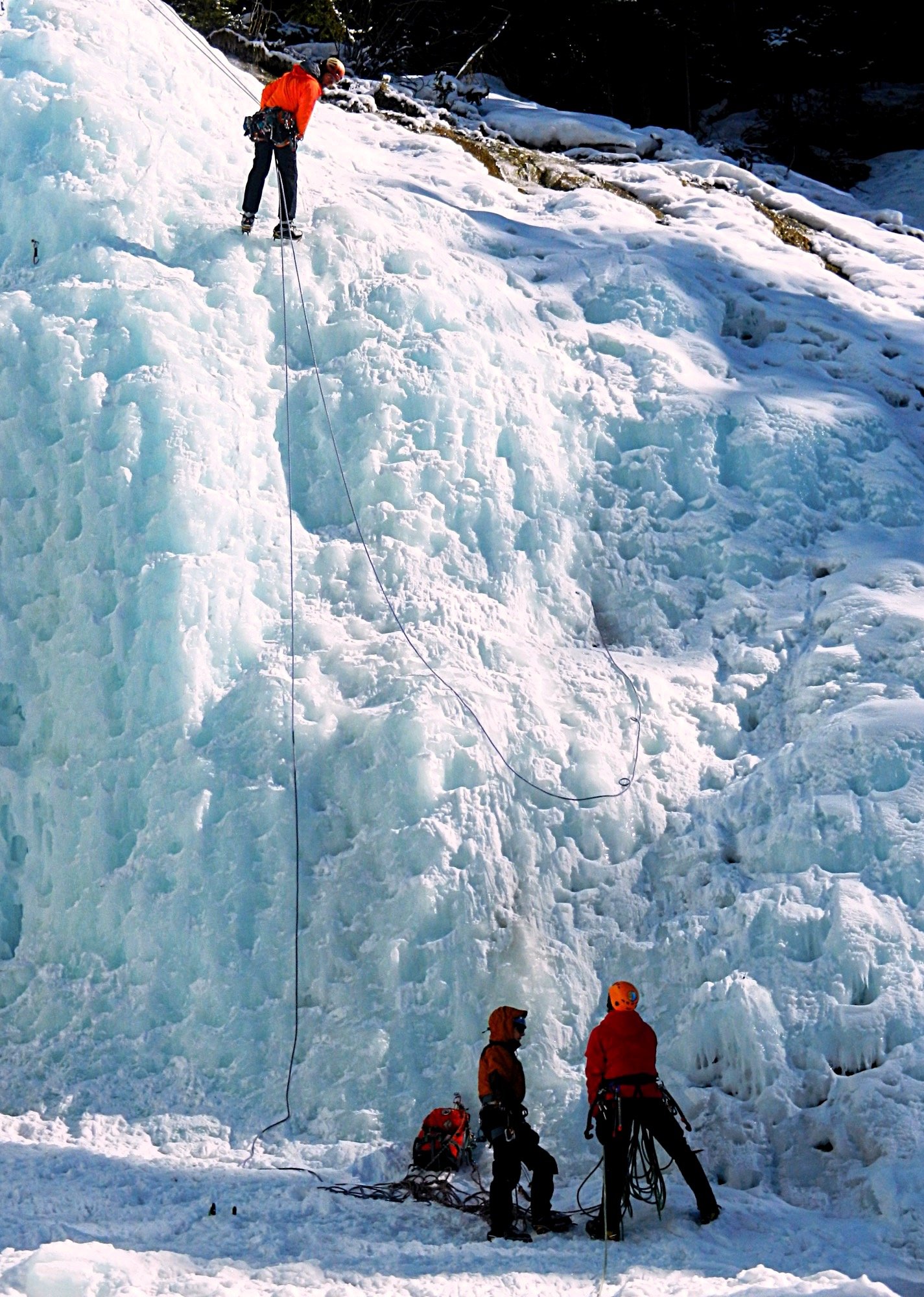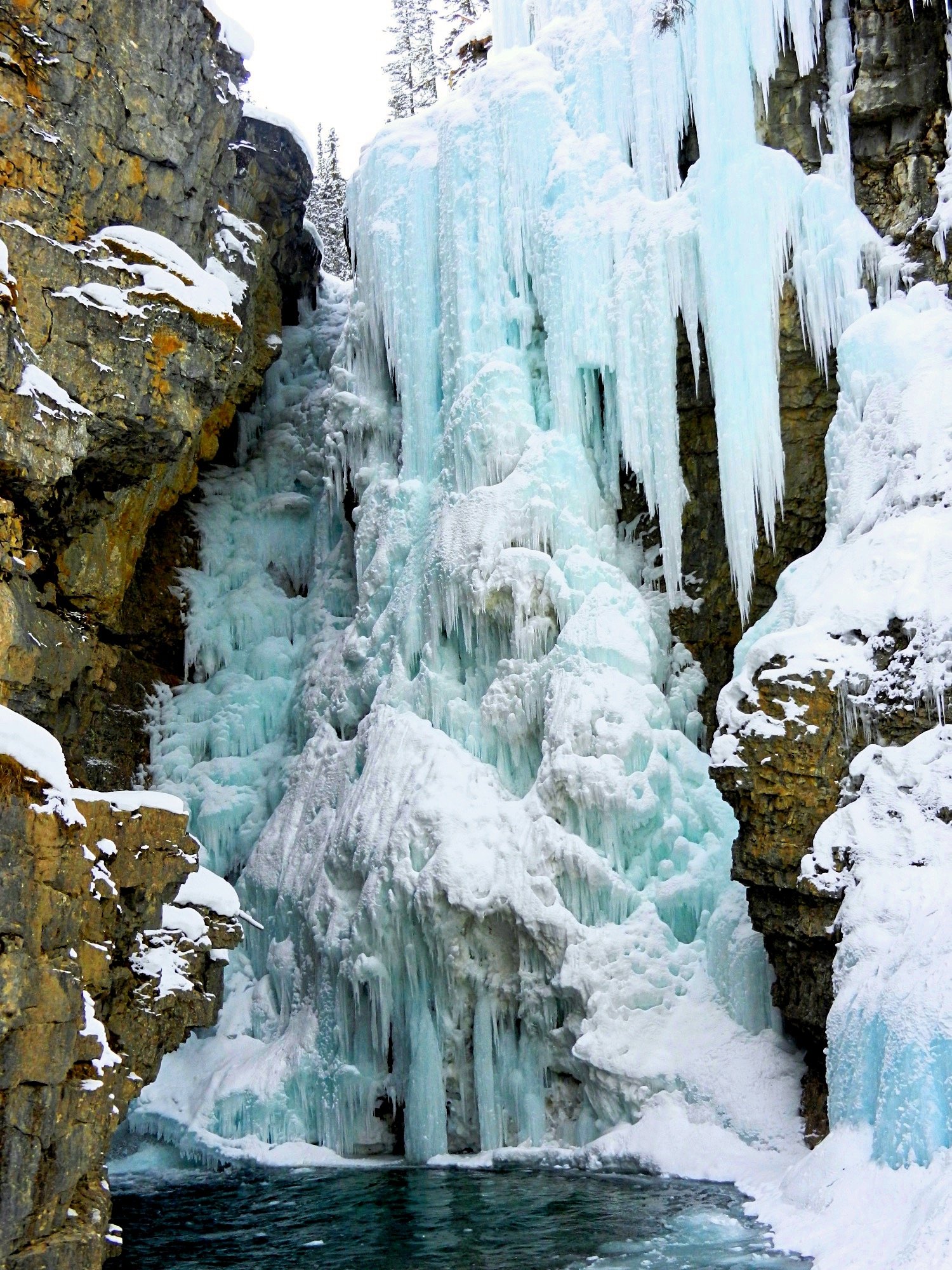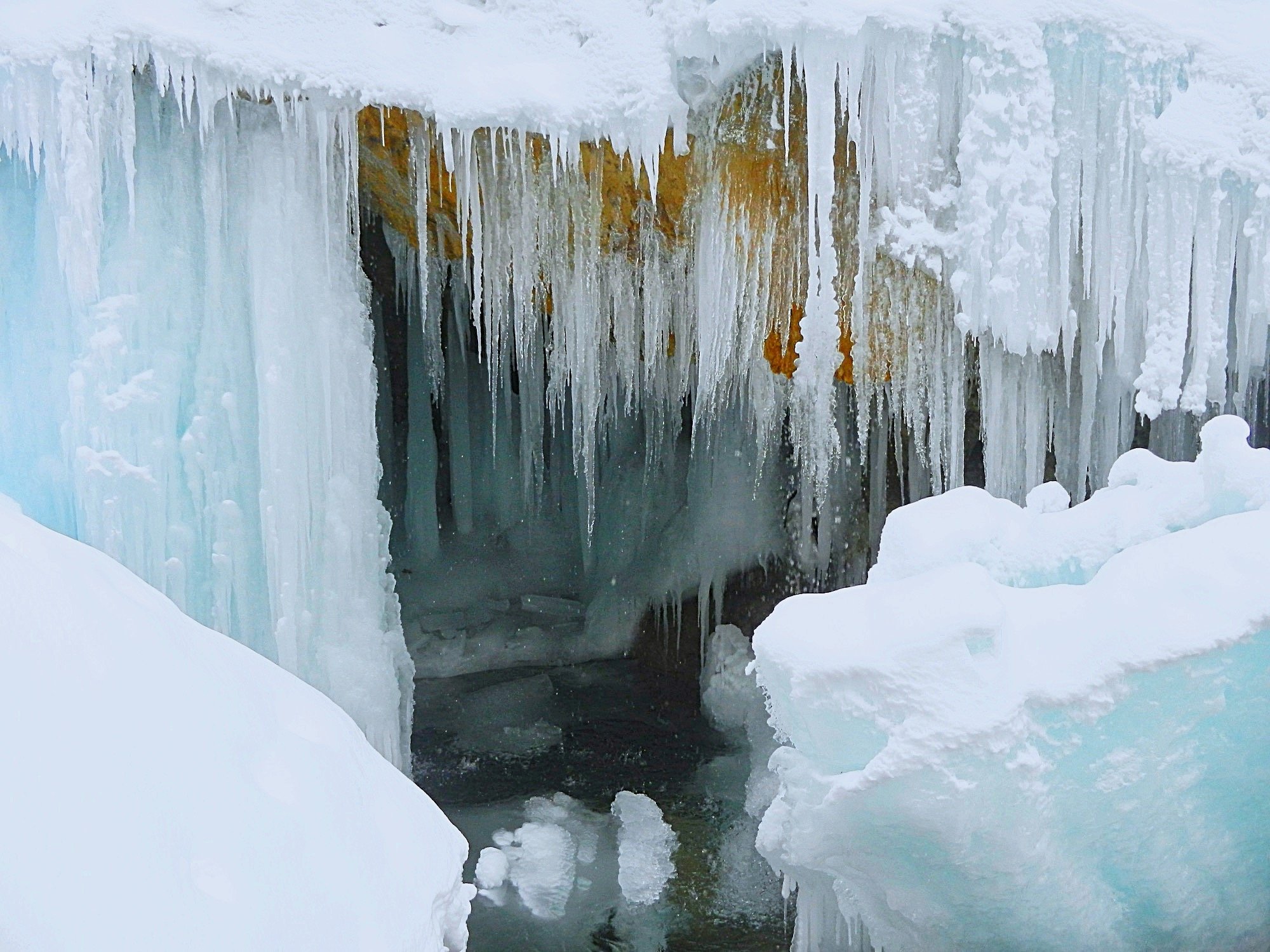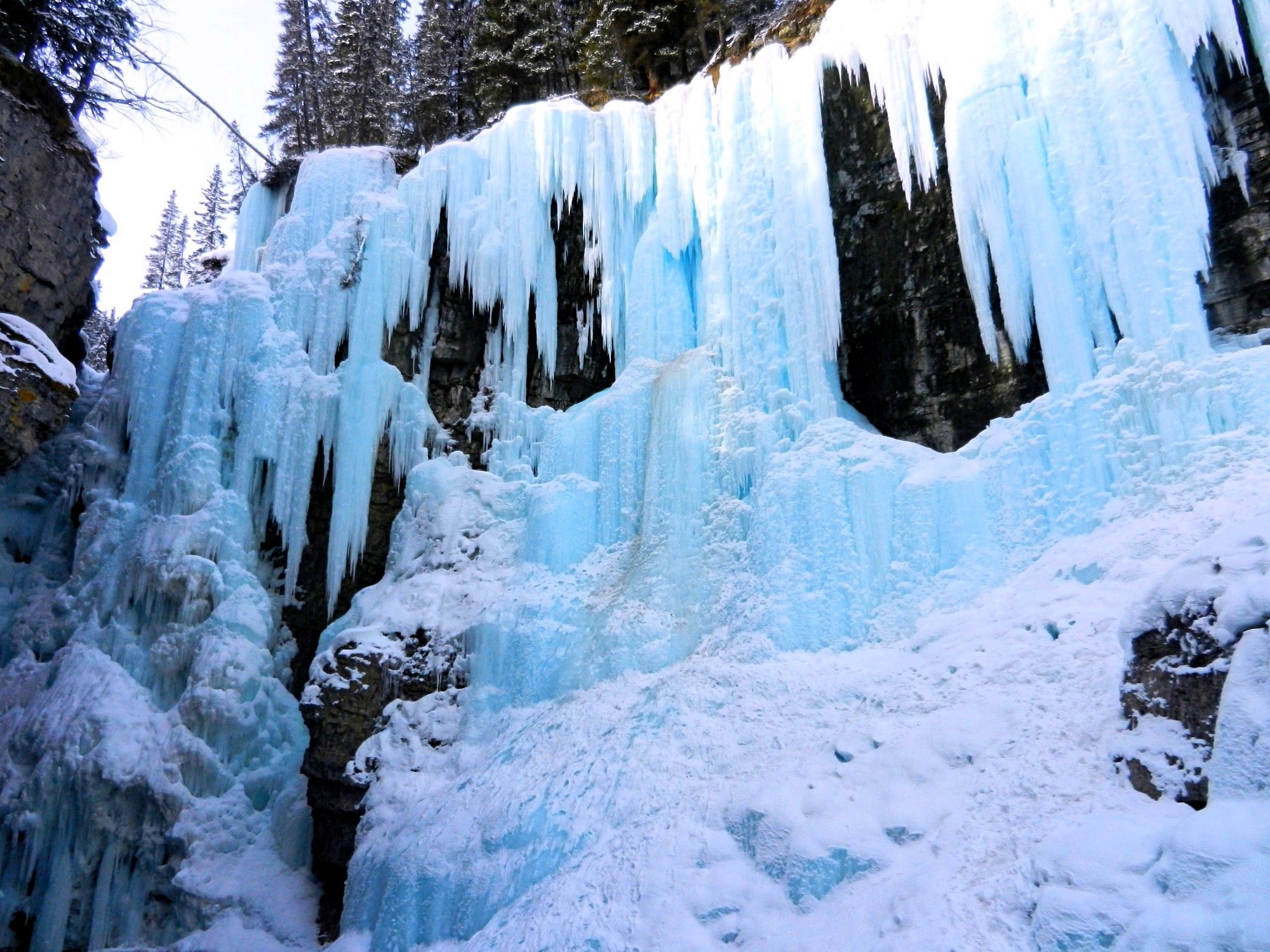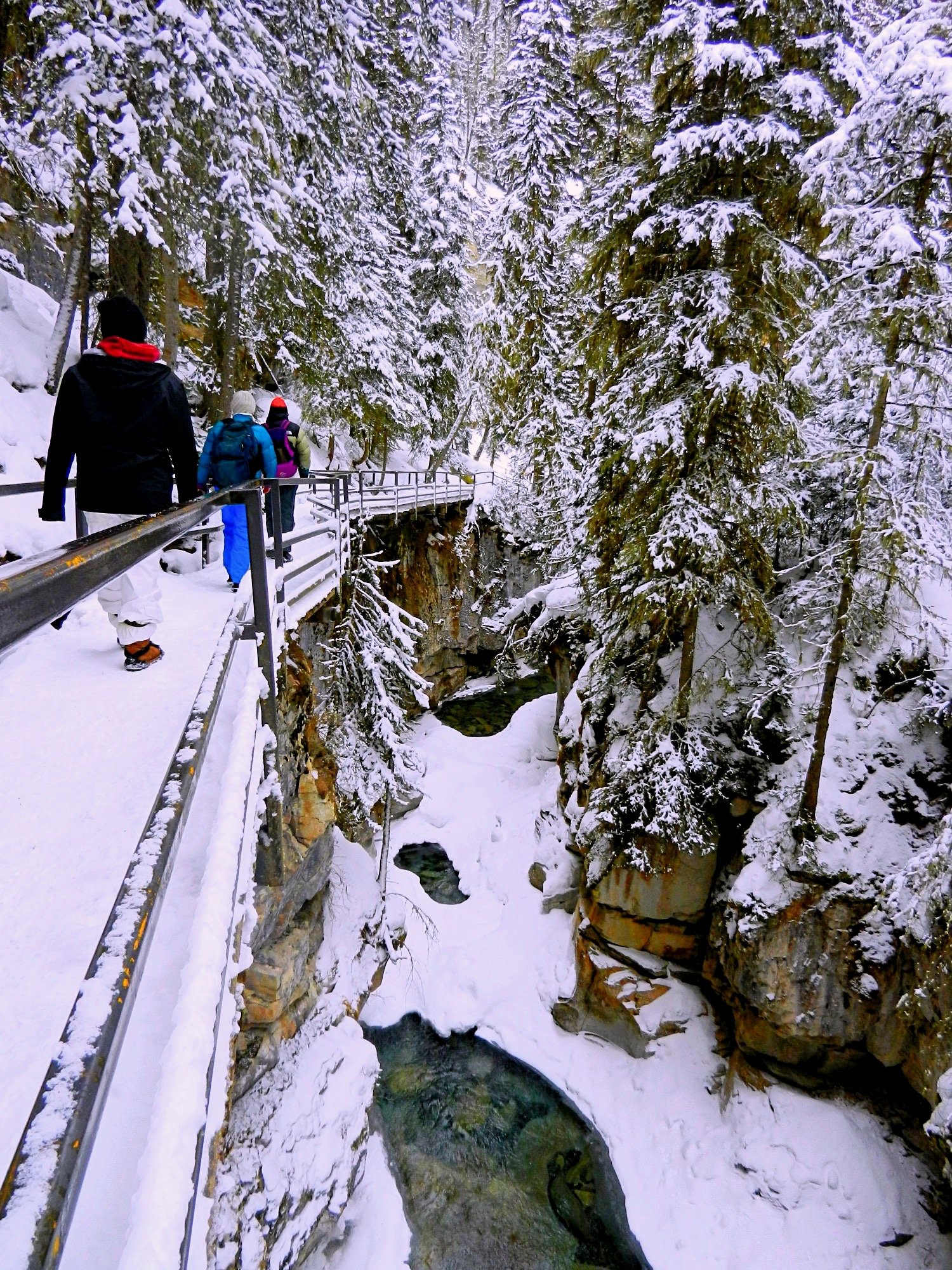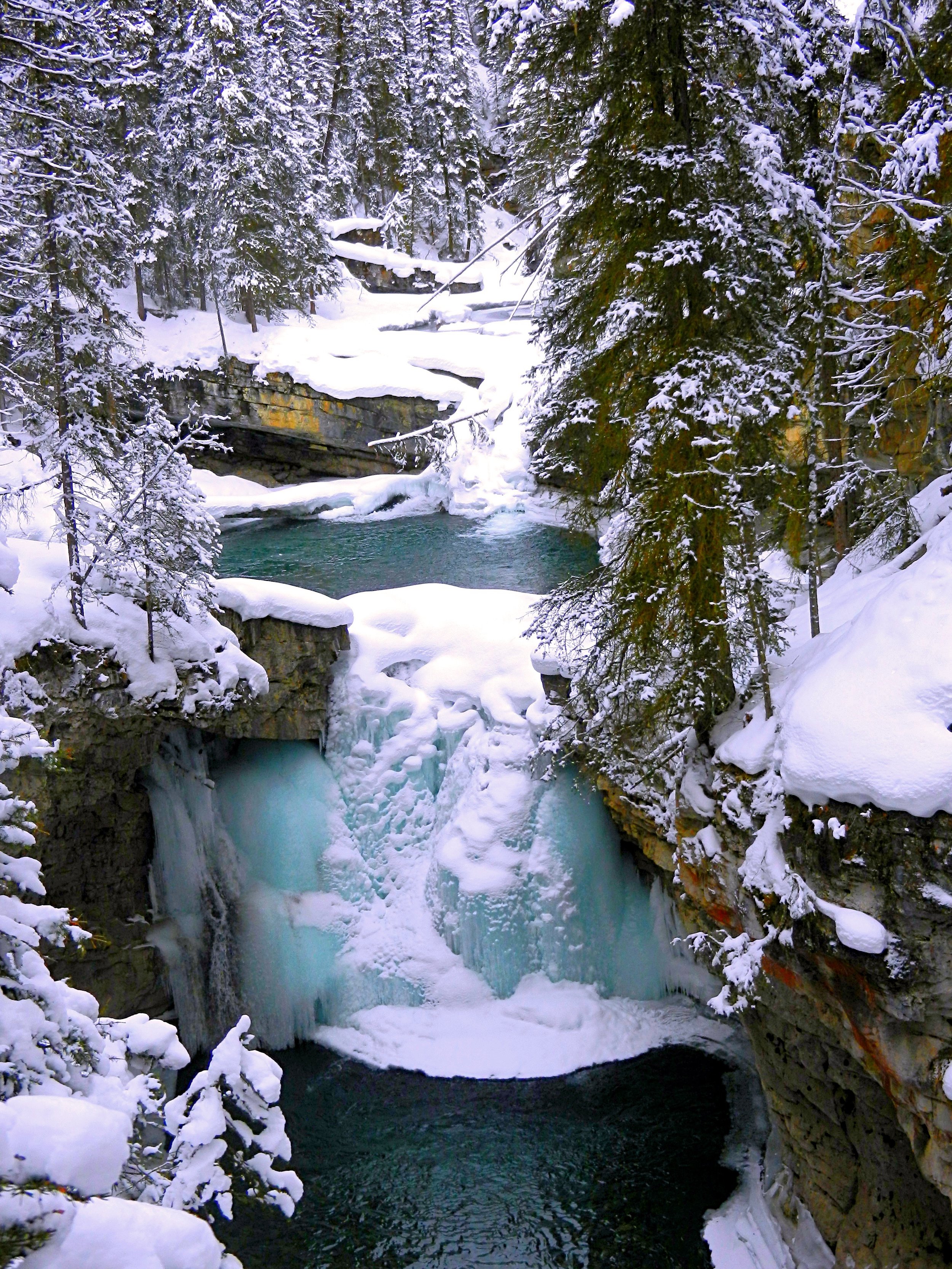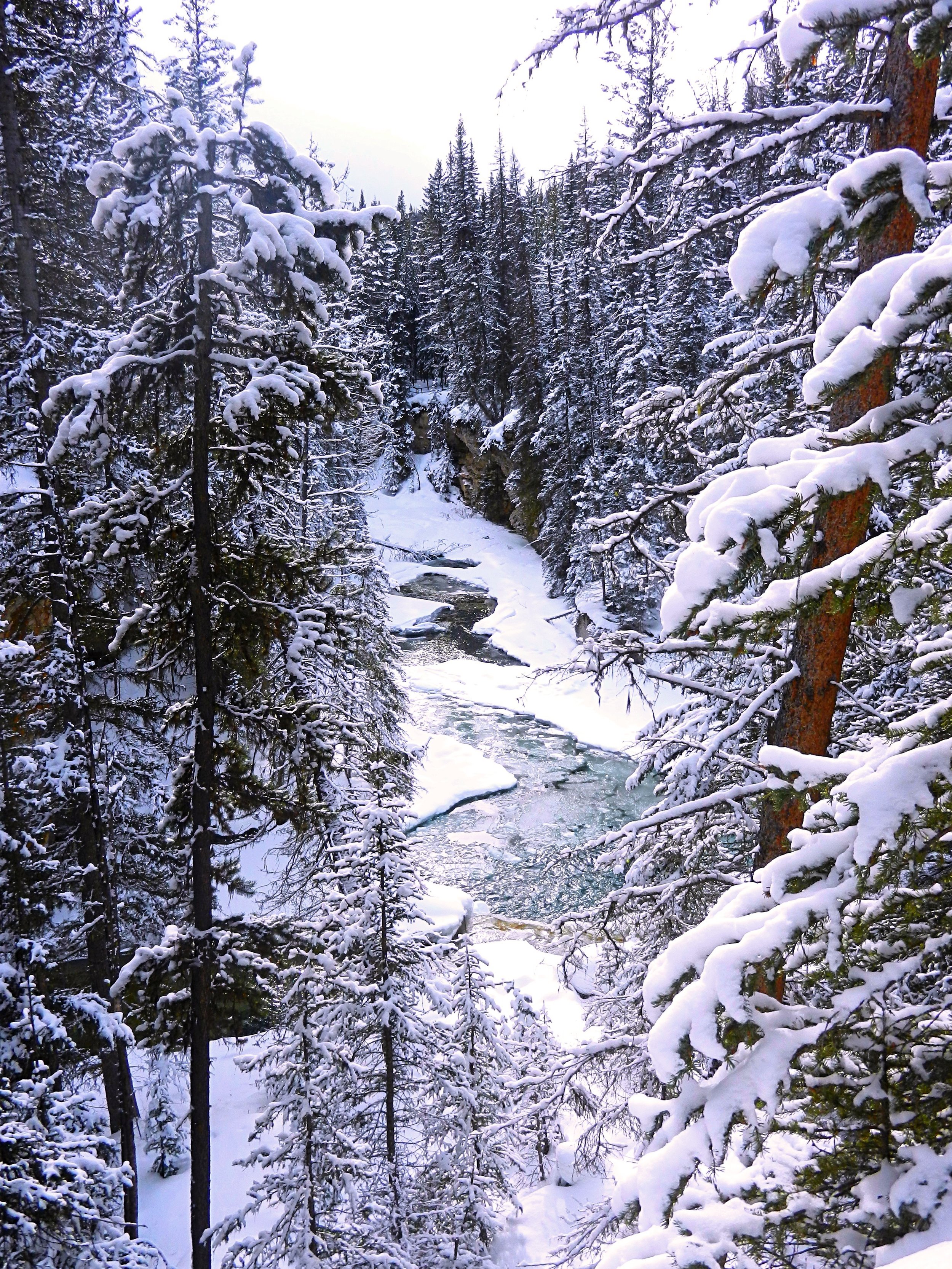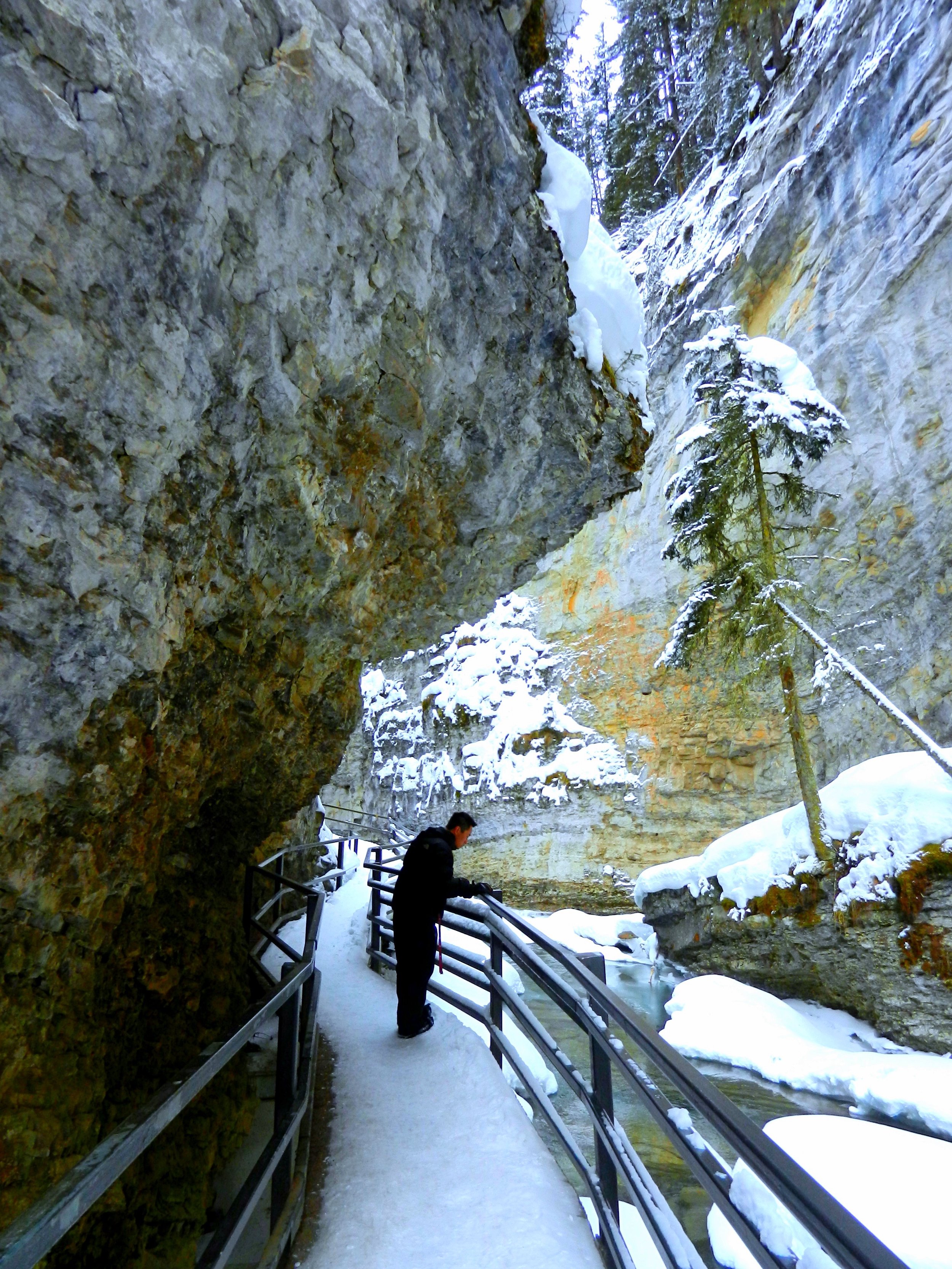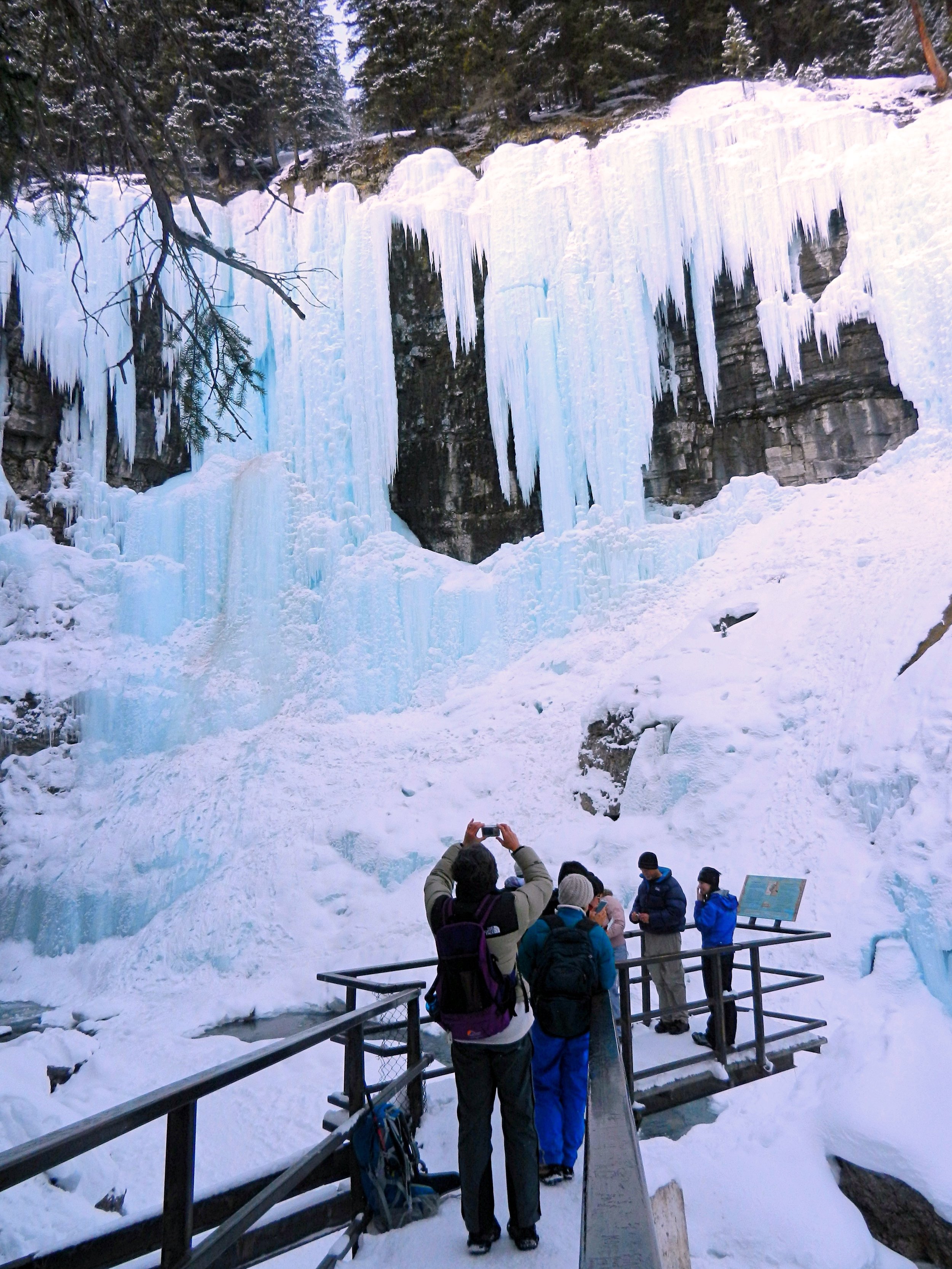Ice Climbing in Banff National Park, Alberta
[This blog post was written in 2015.]
Johnston Canyon is a fantastic gorge created from glacier melt located in the Bow Valley, Alberta. It sits within Canada’s Banff National Park.
It was formed when loose gravel and rock along the mountainside slumped into the valley in what was called the Hillsdale Slide. This diverted Johnston Creek, which follows fractures in the bedrock, and began to dissolve and erode the rock. Thousands of years later, Johnston Canyon is the result.
Ice climbing in Johnston Canyon is a great way to experience this area 30 minutes west of the town of Banff. An easy 2.7 km hike takes you past two impressive waterfalls and numerous smaller ones. Hikers follow catwalks and raised platforms that make it easy to traverse the ice (of which it is prohibited to walk directly on) and allows close proximity to the canyon walls.
An alternate trail goes past six “ink pots” – spring water pools that reflect a gorgeous turquoise colour.
Discover Banff Tours takes small groups on day hikes, which is great if you want a guide to teach you more about the ecology of the area. The company also provides ice-cleats, which are a good idea to have.
As you near the Upper Falls at the end of the trail, the waterfalls begin to freeze. Although the outer water of the falls is frozen, underneath is still falling water. This creates a lovely movement beneath the otherwise frigid landscape. From here you can see the frozen waterfalls where you can ice climb – Upper Falls is 30 metres high and a 120 metre elevation gain from the parking lot.
Meet Barry Blanchard, an ice climbing guide with Yamnuska Mountain Adventures, who provide ice climbing lessons for all levels: “The Rocky Mountains offer pretty much any form of mountain adventure that you want to experience.
“There are a number of virgin alpine faces in the Rockies that are big, glaciated, steep and high mountains offering the most challenging kind of combination of terrain and challenge, especially in the wintertime. There is no shortage of that type of opportunity in this range. I’m a very passionate rock climber and there’s a lot of good rock climbing in the Canadian Rockies – all things considered, it’s probably the best place to ice climb in the world.
“I started with rock climbing, but if you’re a keen climber in Calgary or the Bow Valley – we have eight months of winter – so if you don’t ice climb, you lose three quarters or two thirds of the year for your recreation!
“A number of my best climbs have been in the Rockies: the north pillar of North Twin, the north and northeast faces of Howes peak in the wintertime, Emperor Face of Mount Robson. Some of the best climbs of my career have been in this range.
“And then smaller mountains, but equally great memories: Mount Yamnuska, specifically the south face. I probably spent between 400-500 days of my life on that cliff, climbing rock routes, so it’s basically where I learned to climb and is a very special place for me.”
Recommended books: Lonely Planet’s Banff, Jasper and Glacier National Parks; The Call Of Ice: Climbing 8000-Meter Peaks in Winter; and How to Ice Climb!
* The above links are to Amazon and are for your reference. I receive a small referral fee if you buy from Amazon. But I encourage you to buy books from any retailer, ideally your local bookstore!
